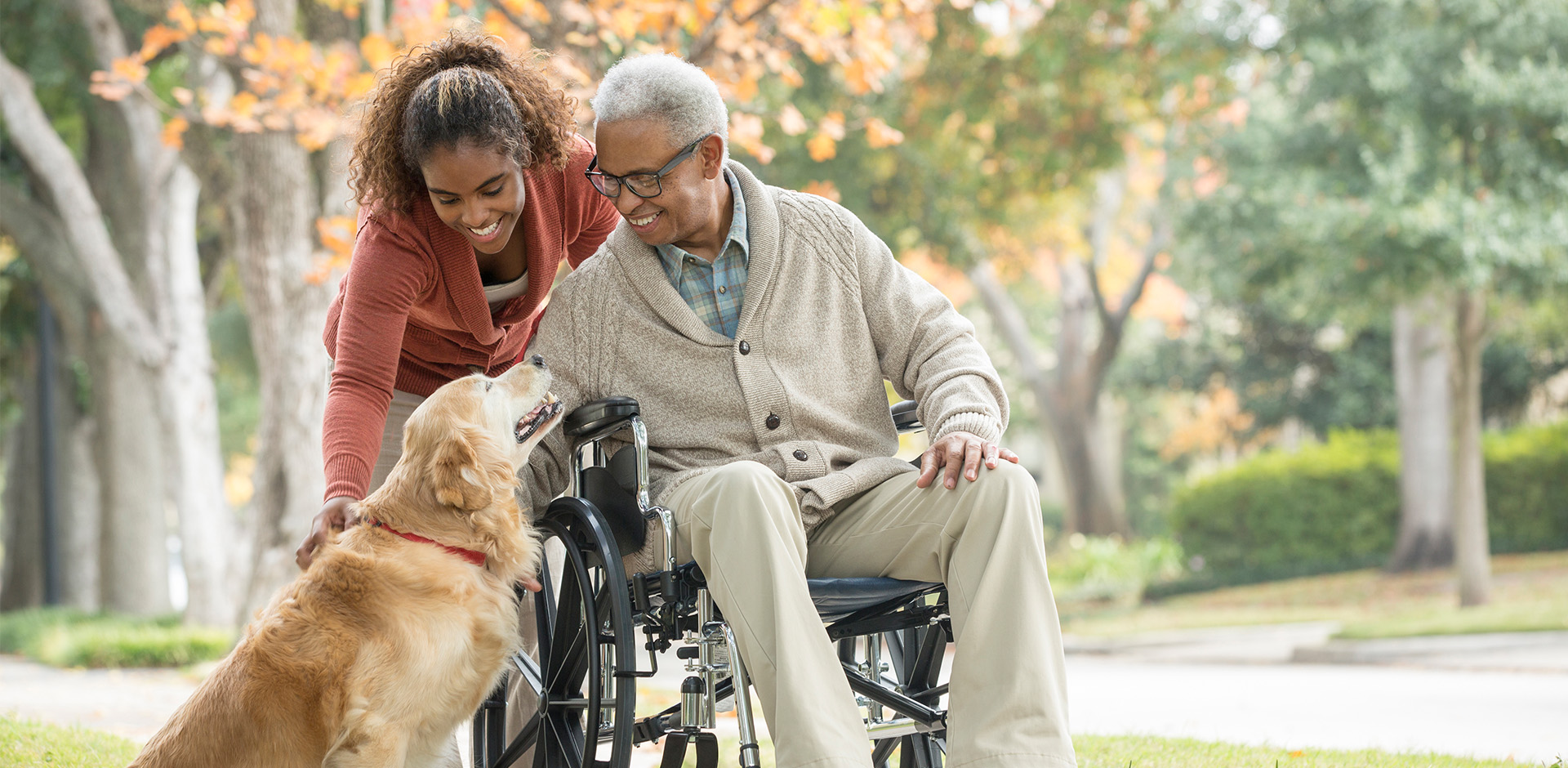Glossary of Terms
Acute pain
Pain that comes on suddenly and often accompanies illness, inflammation, or injury to tissues. It can last from a few seconds to many weeks, but generally goes away over time. The cause of acute pain can usually be diagnosed and treated.
Amino acid
A building block of proteins. There are 20 different kinds of naturally occurring amino acids.
Antibody
A protein molecule (also called an immunoglobulin) produced by white blood cells (B-cells, or B-lymphocytes) in response to an antigen (a foreign, often disease-causing, substance). The binding of antibody to antigen leads to the antigen’s destruction.
Antigen
A substance or molecule that is recognized by the immune system and that causes a reaction. The molecule can be from a foreign material such as a bacterium or virus, or the molecule can be from the same organism (one’s own body) and called a self-antigen.
Autoimmune disease
A condition in which the immune system mistakenly attacks the body’s own organs and tissues.
Autonomic nerves
The part of the nervous system that regulates involuntary body functions such as blood pressure, heart rate, sweating, pupil size, digestion and sexual response. Damage to the autonomic nerves may result in a too fast or too slow heartbeat, difficulty swallowing, abnormal sweating, nausea, vomiting, diarrhea or constipation, problems with urination, and sexual dysfunction.
Autosome
Any of the non-sex-determining chromosomes. Human cells have 22 pairs of autosomes.
Axon
The thin, long fiber of a nerve cell (neuron) that extends from the nerve cell and carries messages from one nerve to another.
B-lymphocytes (B-cells)
White blood cells of the immune system. The B-cell produces antibodies that bind antigens.
Base
The basic subunit of DNA or RNA.
Cell
The basic subunit of any living organism. A small, watery, compartment filled with chemicals and a complete copy of the organism’s genome, or genetic information (DNA).
Cell body
The part of a neuron (nerve cell) that contains the nucleus.
Central nervous system (CNS)
The part of the nervous system that consists of the brain and spinal cord.
Cerebrospinal fluid (CSF)
The fluid that surrounds and protects the brain and spinal cord.
Chromosome
A rod-shaped structure, located in the nucleus of a cell, that contains genes. It is made up of DNA and proteins. Chromosomes come in pairs and humans have 23 pairs of chromosomes, 46 in all: 44 autosomes and two sex chromosomes.
Chronic pain
Chronic pain lasts for longer periods of time than acute pain and is harder to treat. The cause of chronic pain may be difficult to determine – it may hang on for months after an injury appears to have healed, or there may be an ongoing cause of pain, like arthritis or cancer. The pain may also occur without any known disease or injury. The pain may be relatively constant or it may come and go.
Dendrite
The branch-like extensions of a nerve cell that receive information from other cells.
Diabetic neuropathy
A nerve disorder caused by diabetes; characterized by a loss or reduction of sensation in the feet, and in some cases the hands, and pain and weakness in the feet.
DNA (deoxyribonucleic acid)
The chemical inside the nucleus of a cell that carries the genetic instructions for making living organisms. Along with RNA, the two types of molecules that carry genetic information.
Dominant
A gene that almost always results in a specific physical characteristic, for example, a disease, even though the patient’s genome (DNA, genetic information) possesses only one copy. With a dominant gene, the chance of passing on the gene (and therefore the disease) to children is 50-50 in each pregnancy.
Enzyme
A protein that initiates a chemical reaction, but doesn’t change the direction or nature of the reaction.
Etiology
The study of the causes or origins of diseases or disorders.
Gamma globulins
Proteins in the blood that act as immunoglobulins or antibodies that fight infection. Also known as immune globulin (Ig).
Gene
The structure inside each cell that is the basic unit of inheritance. Made of DNA, genes contain the instructions that tell our bodies how to grow and develop and determine individual characteristics such as eye color and blood type. Each person has 2 copies of each gene, one inherited from each parent.
Genome
All of the DNA in an organism or a cell; all of the DNA a person contains. It includes both the chromosomes within the nucleus and the DNA in mitochondria.
Glial cell
Cells that provide physical and nutritional support to neurons.
Human genome project
An international research project to map each human gene and to completely sequence human DNA.
Idiopathic
A disease for which the cause is unknown.
Immune system
The complex group of cells and organs that defends the body against infection and disease.
Immunoglobulins (Ig)
Also called antibodies; proteins produced by plasma cells that help fight infections. There are five classes: IgA, IgD, lgG, IgM, and IgE.
Immunotherapy
Using the immune system to treat disease, for example, in the development of vaccines. May also refer to the therapy of diseases caused by the immune system.
Intravenous immunoglobulin (IVIg or IgG)
Gamma globulin therapy injected directly into the vein.
Inherited
Transmitted through genes from parents to offspring.Idiopathic
A disease for which the cause is unknown.
Immune system
The complex group of cells and organs that defends the body against infection and disease.
Immunoglobulins (Ig)
Also called antibodies; proteins produced by plasma cells that help fight infections. There are five classes: IgA, IgD, lgG, IgM, and IgE.
Immunotherapy
Using the immune system to treat disease, for example, in the development of vaccines. May also refer to the therapy of diseases caused by the immune system.
Intravenous immunoglobulin (IVIg or IgG)
Gamma globulin therapy injected directly into the vein.
Inherited
Transmitted through genes from parents to offspring.
Locus
The place on a chromosome where a specific gene is located, a kind of address for the gene. Also, the DNA at that position. One locus, two loci.
Lymphocyte
A type of white blood cell of the immune system.
MRI (magnetic resonance imaging)
A diagnostic procedure that uses a magnet in conjunction with a computer to create pictures of areas inside the body.
Mitochondria
The main energy source in cells.
Molecule
A group of atoms arranged to interact in a particular way; the smallest unit of a substance that can exist on its own and keep the character of the substance.
Mononeuritis
Inflammation of a single nerve.
Motor nerves
Motor nerves send impulses from the brain and spinal cord to all of the muscles of the body and are responsible for voluntary movement. Motor nerve damage can lead to muscle weakness, difficulty walking or moving the arms, cramps and spasms.
Mouse model
A laboratory mouse useful for medical research because it has specific characteristics that resemble a human disease or disorder. Strains of mice having natural mutations similar to human ones may serve as models of such conditions. Scientists can also create mouse models by transferring new genes into mice or by inactivating certain existing genes in them.
Mutation
A change in the number, arrangement, or molecular sequence of a gene.
Myasthenia gravis
A chronic autoimmune neuromuscular disease characterized by varying degrees of weakness of the skeletal (voluntary) muscles of the body. Myasthenia gravis is caused by a defect in the transmission of nerve impulses to muscles.
Myelin
The fatty substance around the nerve fibers (axon) that acts as insulation and improves the speed of conduction of nerve impulses. It is formed in the peripheral nervous system by Schwann cells.
Nerve
The cord-like bundle of fibers that is responsible for sending sensory and motor information throughout the body.
Neuron
The basic unit of the brain and nervous system. Neurons use electrical signals and chemical signals to send information to other nerve cells.
Neurotransmitter
A chemical messenger by which neurons (nerve cells) communicate with each other and with other cells.
Nucleotide
A subunit of DNA or RNA that includes one base, one phosphate molecule, and one sugar molecule (deoxyribose in DNA, ribose in RNA).
Nucleus
The central cell structure that houses the chromosomes. The organelle that contains the genetic information.
Organelle
A specialized structure having a definite function in a cell; for example, the nucleus, a mitochondrion, a ribosome.
Pathogenesis
The origin of a disease or disorder and the factors that cause the disease.
Peripheral nervous system (PNS)
The part of the nervous system that connects the brain and spinal cord (central nervous system) to the rest of the body.
Peripheral neuropathy
A common, often misdiagnosed disorder that results from damage to the peripheral nervous system. Symptoms include numbness, weakness, tingling and/or burning in the toes or fingers.
Phenocopy
A trait not caused by inheritance of a gene but that appears to be identical to a genetic trait.
Phenotype
The observable traits or characteristics of an organism, for example hair color, weight, or the presence or absence of a disease. Phenotypic traits are not necessarily genetic.
Plasma
The liquid portion of unclotted blood.
Plasma cell
A cell derived from B-cells; the main antibody producing form of B-cells.
Predisposition
To have a tendency or inclination towards something in advance.
Protein
A molecule made up of a number of amino acids arranged in a specific order determined by the genetic code. Proteins are essential for all life processes. Immunoglobulins (antibodies) are proteins.
Recessive
A genetic disorder that appears only in a person who has received two copies of a mutant gene, one from each parent.
Recessive gene
A gene that will be expressed only if there are 2 identical copies or, for a male, if one copy is present on the X chromosome.
RNA (ribonucleic acid)
A chemical found in cells and similar in structure to that of DNA. A single-stranded nucleic acid containing the sugar ribose. RNA delivers DNA’s genetic message to the cytoplasm of a cell where proteins are made.
Sensory nerves
The nerves that transmit information about pain, touch, vibration, temperature and position to the brain. Sensory nerve damage often results in tingling, numbness, pain and extreme sensitivity to touch.
Serum
The liquid portion of clotted blood.
Sex chromosome
One of the two chromosomes that specify an organism’s genetic sex. Humans have two kinds of sex chromosomes, one called X and the other Y. Normal females possess two X chromosomes and normal males one X and one Y.
Sex-linked
Traits or diseases associated with the X or Y chromosome. Sex-linked (or x-linked) diseases are generally seen only in males.
Synapse
The area between nerve cells or neurons that transmits nerve impulses.
Syndrome
The group or recognizable pattern of symptoms or abnormalities that indicate a particular trait or disease.
Toxins
Poisons produced by certain animals, plants, or bacteria.
Transgenic
An experimentally produced organism having genetic material (DNA) from another species. The genetic material becomes a part of the organism’s DNA and can be transmitted from one generation to the next.
Vasculitis
Inflammation of the blood vessels.
Virus
An infectious agent that is composed of a protein coat around a DNA or RNA core. Viruses depend on living cells for their reproduction.
White blood cell (leukocyte)
A type of blood cell that helps protect the body from infection. There are 5 basic types of leukocytes.
Resource library
Read our newsletter and explore educational brochures to help expand your knowledge of peripheral neuropathy.








